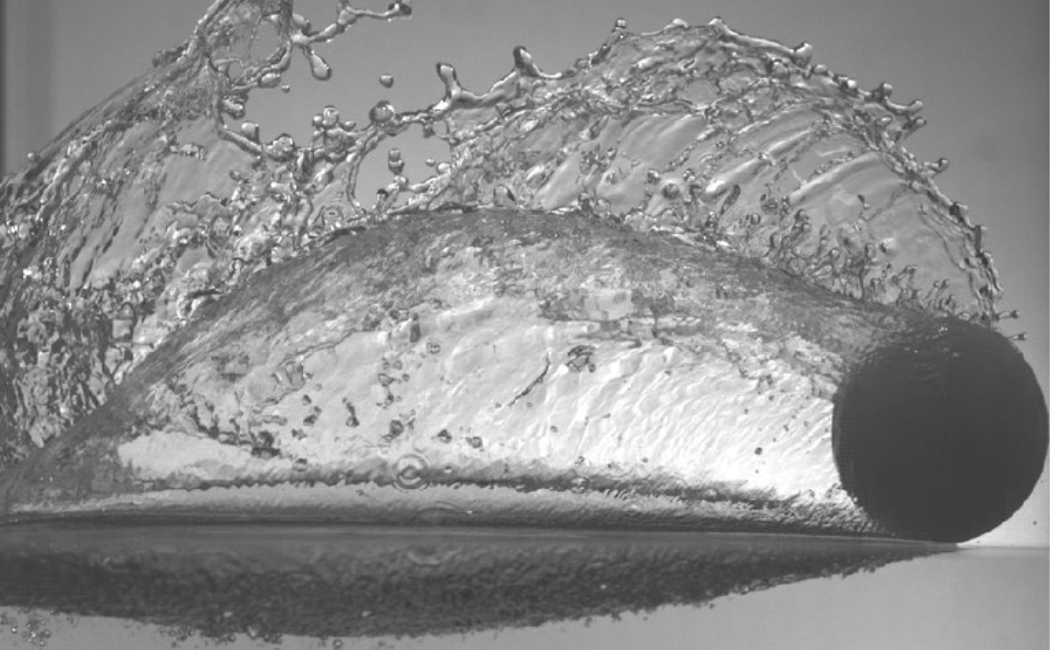

LATEST
NEWS

19 October, 2023
KAUST researchers used high-speed imaging to capture and analyze the behavior of hollow aluminum spheres being pulled along the surface of water. © 2023 KAUST.
Ships, marine robots and oceanographic instruments are set to become faster, more fuel-efficient and easier to maneuver. An approach, developed by researchers from KAUST, provides insight into air cavity formation around buoyant objects that move at the air–water interface.
Understanding air cavity formation helps to predict and control the behavior of an object that floats or skips on water. While moving quickly across the water surface, the object creates a low-pressure zone that causes air to be drawn into the water, generating small cavities. The cavities get trapped underneath the object, reducing friction between the object and the water. This allows the object to skip or glide across the water’s surface with less resistance.
There are many methods devised to study this phenomenon, but they often concentrate on the equilibrium states of floating objects and may not capture the dynamic and transitional behaviors exhibited by cavity formation during skipping.
Now, Ph.D. student Farrukh Kamoliddinov, who led the study under Sigurdur Thoroddsen and Tadd Truscott’s supervision, and co-workers have evaluated the behavior of hollow aluminum spheres being pulled along the water surface. The researchers focused on the less-studied skipping of the spheres, during which individual spheres oscillate below and above the water surface.
“These spheres can generate unique behaviors due to the interplay between their geometry, buoyancy and the surrounding fluid,” Kamoliddinov says.
The researchers systematically varied the pulling angle and counterweight to gauge the influence of these parameters on the sphere’s motion and shed light on the hydrodynamic forces governing cavity formation. They also used high-speed imaging to capture and analyze the details of this dynamic and transient phenomenon in real time. “This approach provides a comprehensive understanding of the hydrodynamics involved,” Kamoliddinov says.
Read more at KAUST Insight.